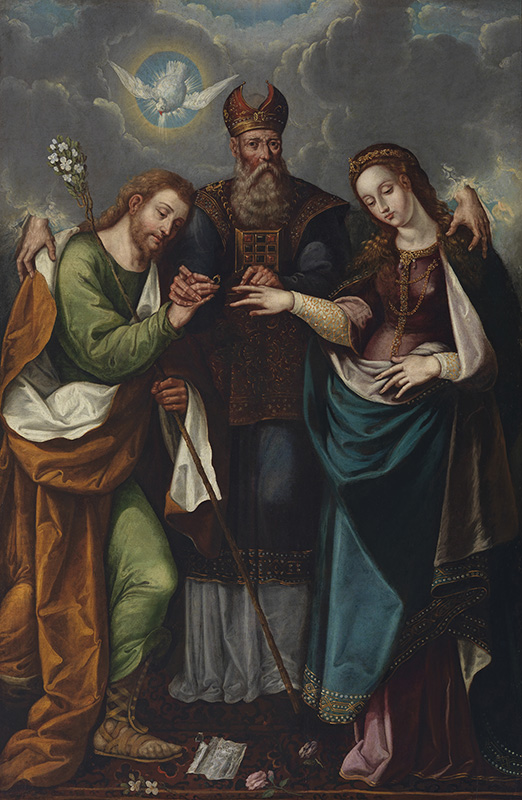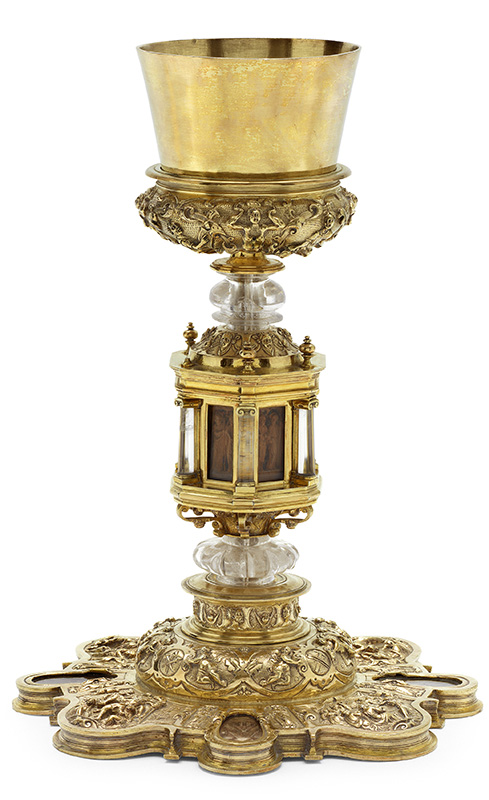Art and Imagination in Spanish America, 1500–1800: Highlights from LACMA’s Collection
Click on images to enlarge them and view captions.
by the Saint Louis Art Museum
This summer, the Saint Louis Art Museum (SLAM) is hosting the exhibition Art and Imagination in Spanish America, 1500–1800: Highlights from LACMA’s Collection, which features more than 100 works drawn from the Los Angeles County Museum of Art’s notable collection of Spanish colonial art. The paintings, sculptures, and decorative arts on view underscore the generative power of Spanish America and its central position as a global crossroads.
Imperial expansion, conquest, colonization, and the trans-Atlantic slave trade marked the period spanning from 1500 to 1800. Cataclysmic social and geopolitical shifts brought people into closer contact than ever before in real and imagined ways, propelling the creative refashioning of the material culture that surrounded them. After the Spaniards began colonizing the Americas in the late 15th century and set out to spread Christianity, artists working there drew from a range of traditions—Indigenous, European, Asian, and African—reflecting the interconnectedness of the world. Private homes and civic and ecclesiastic buildings soon teemed with imported and local objects.
Spanish America was neither a homogeneous nor a monolithic entity, and local artists were not passive absorbers of foreign traditions. Recognizing the profound violence that marked the process of conquest and colonization, this exhibition explores the social, and economic dynamics within these societies that paved the way for new artworks.
The majority of works in the exhibition were created in Mexico in the 1700s, but present-day Bolivia, Brazil, Colombia, Ecuador, Guatemala, Paraguay, Peru, and Venezuela are also represented. An elaborately carved wooden chest from the Philippines demonstrates the impact of Spanish trade routes that crossed the Pacific. Ships filled with silver sailed from Acapulco to Manila. They returned packed with Asian goods, including spices, textiles, porcelain, and lacquered and shell-inlay furniture, which were then distributed across Spanish America and onward to Spain.
The influx of Asian wares inspired artists working in Spanish America to invent new forms of art that drew on local materials. Among the most dazzling works were those inlaid with shimmering fragments of mother-of-pearl, known as enconchados, and gleaming sheets of tortoiseshell (figure 1). A bowl fashioned from a sheet of gold, cups carved from coconut shells, and a silver box that rests on the shoulders of laborers all demonstrate the material wealth and creative potential of Spanish America. Nearly half of the works in the exhibition are paintings, ranging in size from a monumental altarpiece of The Marriage of the Virgin (figure 2) intended for public display, to a badge worn by a nun on her habit to express personal devotion.
The exhibition also includes remarkable textiles and decorative arts made for both secular and religious contexts. Some of the earliest objects in the exhibition are notable for their combination of Indigenous and European artistic practices. A 16th-century man’s tunic (uncu) (figure 3) signaled the high status of its wearer through the geometric motifs derived from royal Inca workshops. A chalice dating to 1575–78 (figure 4) redeployed materials long used by Indigenous artists and invested with sacred meaning—such as precious metals, feathers, and rock crystal—in the creation of a Christian object.
The exhibition is presented in five sections. “Fashioning Identity” features a variety of textiles and paintings that reveal the tensions of representation. “Intimate Faiths” shows devotion on a personal scale. “American Emporium” presents a cascade of materials and techniques that responded to and shaped global trade. “The Art of Two Artists: The Culture of Copies” looks at the circulation of images and their creative refashioning. “Eyes of the Imagination: Envisioning the Divine” demonstrates the fundamental role of large-scale religious images in the project of conversion.
The audio guide features a variety of voices responding to works throughout the exhibition, including a botanist from the Missouri Botanical Garden and a professor of Spanish from Washington University in St. Louis. All of the exhibition materials, including the audio guide, are offered bilingually in Spanish and English.
This exhibition was organized by the Los Angeles County Museum of Art and will be presented at SLAM from June 22–September 1, 2024.
Art and Imagination in Spanish America, 1500–1800 was curated by LACMA’s Ilona Katzew. The organizing curators at SLAM are Genevieve Cortinovis, the Andrew W. Mellon Foundation Associate Curator of Decorative Arts and Design; Clare Kobasa, associate curator of prints, drawings, and photographs; Judith W. Mann, senior curator of European art to 1800; and Amy Torbert, the Andrew W. Mellon Foundation Associate Curator of American Art.
A print version of this article was published in The Magazine of the Decorative Arts Trust, one of our most popular member benefits. Join today!



![Figure 3. Man’s Tunic (Uncu) (Túnica masculina [uncu]), 1500–1600, Peru, southern Andes. Camelid-fiber and cotton tapestry weave, with cross-looped embroidery and braided edging. Los Angeles County Museum of Art, Costume Council and Museum Associates Purchase, M.78.54.2. Photo © Museum Associates/LACMA.](https://decorativeartstrust.org/wp-content/uploads/spanish-figure-3.jpg)
